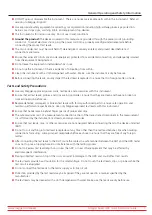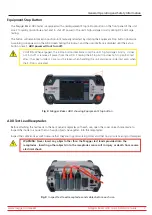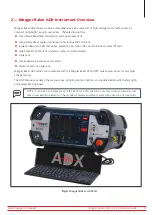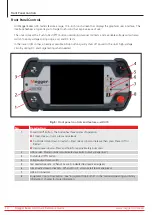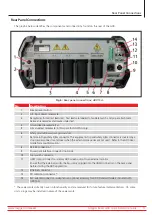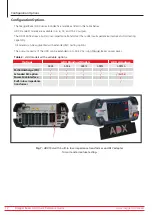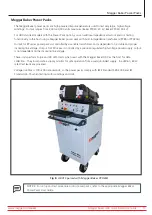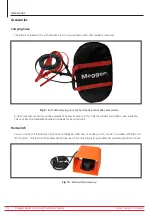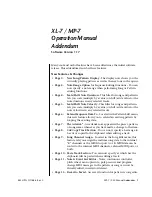
Test Related Precautions
When testing from the switchgear, check that all proper lockouts are in place, and that proper connection is made
to the test points for the Asset being tested. Prevent connection to an adjacent live system during testing by
confirming with appropriate test instruments that the Asset circuit to be tested is dead.
Circuit connections, exposed conductive parts and other metalwork of an installation or equipment under test
must not be touched during testing.
Two-party operation is recommended only when using proper equipment (such as the remote E-Stop) and when
taking appropriate precautions so both operators are aware of all conditions at all times.
Always know what test is being performed and when. For example, do not adjust test leads when operating a
footswitch. Leads will have live voltage and severe electrical shock may result.
For capacitor-started motors or systems with surge arrestors/power factor capacitors, be sure to disconnect all
capacitors from the test circuit before testing.
The maximum capacitance that may be charged by the instrument is 1.0 μF.
After capacitive loads are measured, ensure that the test has terminated and that the load is safely discharged (and
protected from dielectric absorption if necessary) before disconnection.
Never attempt to test a winding with both the host and power pack leads attached to the winding. Damage to
the tester will occur.
Keep unauthorized personnel out of the test area.
Do not allow any person with a heart pacemaker—or other active implanted medical device—into the test area
during testing.
The included safety earth/ground strap must be used to connect the dedicated earth/ground terminal on the back
of the equipment to protective earth/ground.
Do not use any device to lock the footswitch or front panel test button in the ON state. Manual test controls must
be physically maintained by the operator as designed.
Connect the footswitch (if it is to be used) before selecting any TEST screen.
In the event of complete system power loss during testing—including the backup battery—ensure that the load is
completely discharged in a safe manner.
In the event of control loss, the instrument may be safely switched off by pressing the power button for five
seconds.
www.megger.com/baker
Megger Baker ADX Quick Reference Guide
4
General Operating and Safety Information









